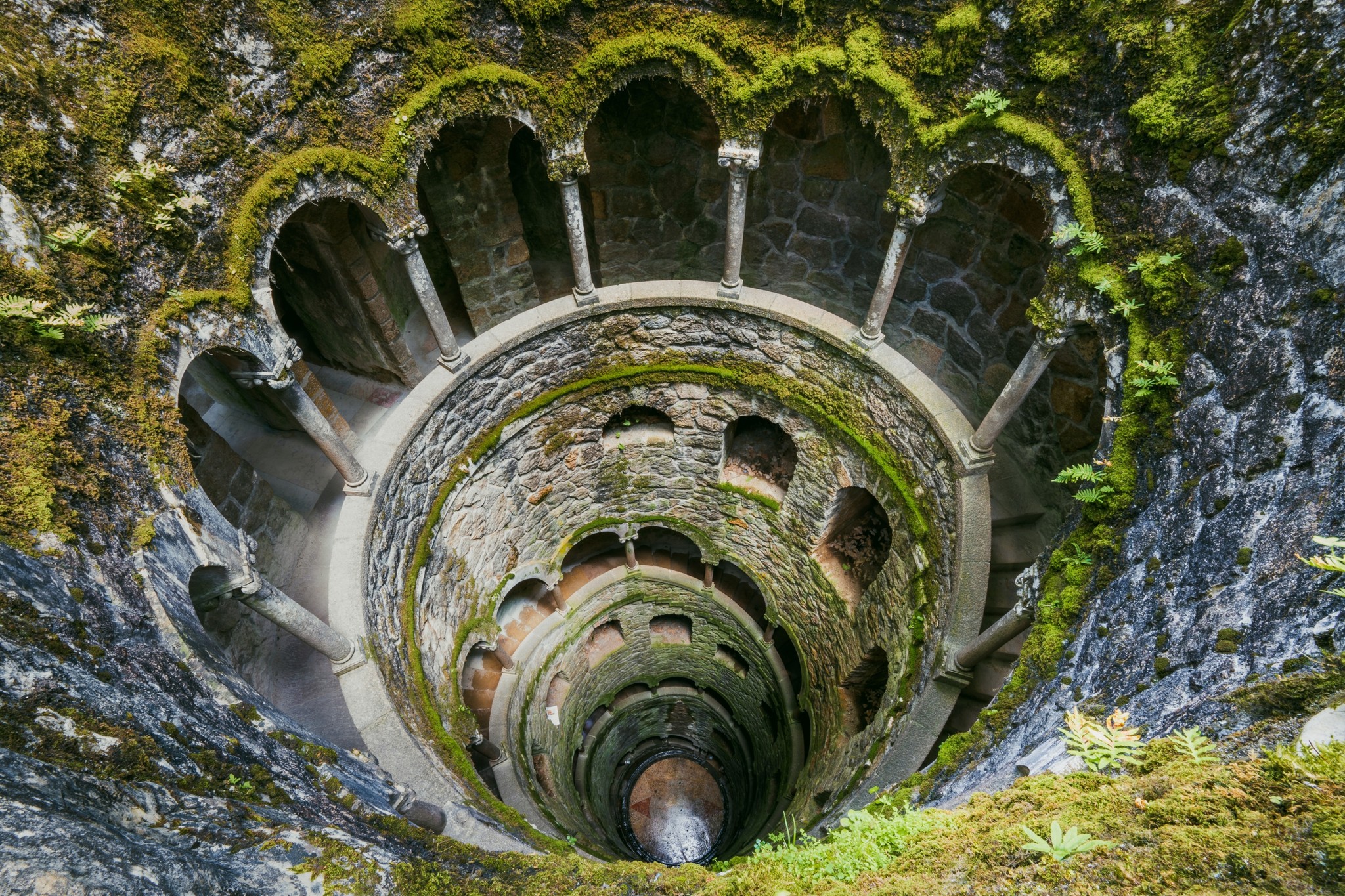June 3, 2025
Not all travel must-sees are in plain sight — some of the most thrilling finds are hidden underground. We dig deep to uncover some of the world’s most unusual underground highlights, and help you plan them into your next trip.
Catedral de Sal de Zipaquirá, Colombia

Willian Reis/Unsplash
Marvel at this working Roman Catholic cathedral’s neon-lit naves, chapels, and dome — all carved from the rock of Zipaquirá’s salt mine, 180 meters below ground. The present structure was painstakingly built below a previous incarnation of the underground church in the 1990s, after the original 1950s’ sanctuary was deemed unsound. Book tickets in advance to join a tour, or attend mass on Sundays with an online reservation.
Add it to your Colombia itinerary: Fly into Bogotá, or take a bus from Medellín or Cali (10–12hr) or Colombia’s Coffee Triangle (8hr). Zipaquirá is an hour’s drive from Bogotá, or you can take the train from Usaquén station (2hr). Plan a whole day to visit the cathedral.
Napoli Sotterranea, Naples

Serge Yatunin/Shutterstock
Spend an hour navigating Naples as built by the Romans when they conquered this former Ancient Greek colony in the 4th century. You’ll see aqueducts, cisterns, a former marketplace, and a theater, learn about the life of Ancient Romans and how the space (now 40 meters underground) sheltered 40,000 residents during the bombings of WWII.
Add it to your Italy itinerary: Italy’s intercity train network is a brilliant way to see the country. Regular trains from Rome to Naples take 2hr 15min. Once in Naples, the Napoli Sotterranea entrance is a 10-minute walk from Dante metro stop.
Coober Pedy, Australia

Alexandre.ROSA/Shutterstock
Yep, this isn’t just one spot in town — it’s the whole town. Located in the Australian Outback, and with temperatures pushing 45ºC (113ºF) in summer (Dec–Feb), this dusty opal-mining hub is just too damn hot for residents to live comfortably overground. Instead, life takes place in a series of ‘dug-outs’ — you’ll find deliciously cool subterranean churches, museums, and hostels below the scorching surface.
Add it to your Australia itinerary: Getting to Coober Pedy is not for the faint-hearted — located almost halfway between Adelaide and Alice Springs, the town is the natural (and only) stopover point during that 17-hour drive. Stay for a day or two to explore the town’s quirky attractions and see a sensational desert sunset.
Cisternerne, Copenhagen

ephst/Shutterstock
With its dripping ceilings, damp pillars, and semi-darkness, this below-city chamber — Copenhagen’s water reservoir from 1856–59 — is a chillingly atmospheric exhibition space for large-scale installations that use light, sound, and sculpture to eerie effect.
Add it to your Scandinavia itinerary: Fly into Copenhagen or cross the border from Hamburg, in Germany (5–6 hours by car) or Gothenburg, in Sweden (3–4 hours by car or train). You can walk to the Cisternerne from Frederiksberg Palace in under 10 minutes.
Cu Chi Tunnels, Vietnam

OlegD/Shutterstock
Among the most famous things to see near Ho Chi Minh City, these tunnels, just a few meters under the ground, were part of a country-wide network used by the Viet Cong to secretly move people, weapons, and supplies during the US–Vietnam war. It’s a real squeeze to lower yourself through the holes into the tunnels, and inside you’ll start sweating immediately as you crouch and sidestep your way along the tight, humid tunnel to the exit.
Add it to your Vietnam itinerary: Fly into Ho Chi Minh City, or arrive by bus from Can Tho in the Mekong Delta (4hr) or Da Lat (8hr). The Cu Chi Tunnels are a 1.5-hour drive from the city center, or around 3 hours by public transport. Plan a whole day for your visit.
Son Doong Cave, Vietnam

Andrew Svk/Unsplash
Staying in Vietnam, we’ll cross to Phong Nha-Ke Bang National Park, and a subterranean sight of altogether different proportions. At 38.5 million cubic meters, Son Doong is the world’s largest known cave by volume, in a park whose known cave network stretches more than 200 kilometers. In this 9km section, you’ll explore a true underworld containing a river, rainforest, mist-filled tunnels, and sinkhole skylights.
Add it to your Vietnam itinerary: Phong Nha-Ke Bang National Park lies equidistant between the cities of Vinh and Hue, both a 4-hour drive. Otherwise, take a bus or train (or a domestic flight) to Dong Hoi, then travel by bus to the national park (1hr). Multi-day tours of the caves can last up to six or seven days — if you’re short on time, you can scratch the surface with three days in the area.
Catacombes de Paris, France

Dmitrii E./Unsplash
Descend into darkness 20 meters beneath the City of Light to explore a 1.5km section of this massive and macabre ossuary, where the remains of six million Parisians are laid (artistically) to rest, with skulls and bones arranged in patterns everywhere you look, alongside quotes about mortality. A former limestone quarry, the catacombs were the 18th-century solution for a city whose cemeteries had reached capacity — and they still leave a lasting impression...
Add it to your France itinerary: Fly into Paris, or take a direct high-speed train from major French cities including Lyon (2hr), Marseille (3hr), or Bordeaux (2hr), or from the capitals of nearby countries, like Brussels (1.5hr) or Amsterdam (3.5hr). The catacombs are located right next to Denfert-Rochereau metro station. Book tickets in advance to avoid long queues — plan half a day for your visit.
Forestiere Underground Gardens, California

Jessica Small/Shutterstock
Sicilian Baldassare Forestiere came to the US in 1901 to become a citrus farmer and spent 40 years using his engineering and artistic skills to hand-carve this 10-acre subterranean sanctuary. In his hidden home, he grew citrus trees, quince, grapes, kumquats, and more — all of which flourished thanks to a series of skylights and vents.
Add it to your USA itinerary: Detour to these gardens, located just off Highway 99 in Fresno, while road-tripping east from San Francisco (3hr) or Los Angeles (4hr). Tours are by reservation only and last one hour. Afterwards, make tracks for Sequoia National Park (1.5hr), Death Valley National Park (4.5hr), or Las Vegas (7hr).
Quinta da Regaleira, Portugal

Tatiana Popova/Shutterstock
Do a deep-dive into the splendid grounds of this 16th-century manor house and you’ll come across an extra, eccentric detail — a moss-covered inverted tower spiraling nine stories into the ground. The estate’s then-owner, Carvalho Monteiro, is thought to have been a Freemason who built the 27m-deep well for use in secret rituals. Descend the staircase to explore creepy tunnels that connect different parts of the estate.
Add it to your Portugal itinerary: Reach Quinta da Regaleira, located in Sintra, from Lisbon by train (30min) or from Ericeira by bus (1–2hr). Set aside a full day to explore the estate and other Sintra highlights.
Chand Baori, India

Nila Newsom/Shutterstock
Marvel at one of India's most spectacular stepwells, featuring 3,500 steps arranged in a geometric pattern from ground-level down. Following the well’s construction in the 9th century, local people would descend the steps to draw from the reservoir of water collected during the monsoon season, and would stay to socialize on its cooler lower levels 20 meters below ground.
Add it to your India itinerary: Located in the village of Abhaneri, Chand Baori is a two-hour drive from Jaipur, 95km away. Hire a car with a driver, or join a guided tour to reach this architectural gem. Try to arrive mid-morning for the best light for photographs — and the fewest tourists.
Inspired to go underground? Plan your full trip — including your route and stays — with the Polarsteps app. |
|---|
Cover image: Engel Ching/Shutterstock



